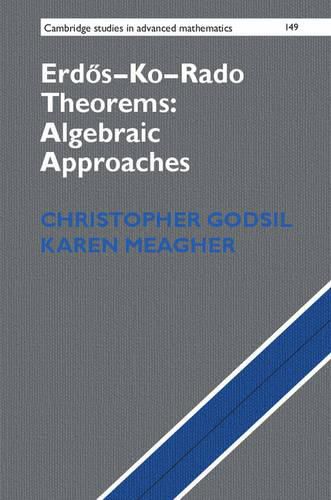Readings Newsletter
Become a Readings Member to make your shopping experience even easier.
Sign in or sign up for free!
You’re not far away from qualifying for FREE standard shipping within Australia
You’ve qualified for FREE standard shipping within Australia
The cart is loading…






Aimed at graduate students and researchers, this fascinating text provides a comprehensive study of the Erdos-Ko-Rado Theorem, with a focus on algebraic methods. The authors begin by discussing well-known proofs of the EKR bound for intersecting families. The natural generalization of the EKR Theorem holds for many different objects that have a notion of intersection, and the bulk of this book focuses on algebraic proofs that can be applied to these different objects. The authors introduce tools commonly used in algebraic graph theory and show how these can be used to prove versions of the EKR Theorem. Topics include association schemes, strongly regular graphs, the Johnson scheme, the Hamming scheme and the Grassmann scheme. Readers can expand their understanding at every step with the 170 end-of-chapter exercises. The final chapter discusses in detail 15 open problems, each of which would make an interesting research project.
$9.00 standard shipping within Australia
FREE standard shipping within Australia for orders over $100.00
Express & International shipping calculated at checkout
Aimed at graduate students and researchers, this fascinating text provides a comprehensive study of the Erdos-Ko-Rado Theorem, with a focus on algebraic methods. The authors begin by discussing well-known proofs of the EKR bound for intersecting families. The natural generalization of the EKR Theorem holds for many different objects that have a notion of intersection, and the bulk of this book focuses on algebraic proofs that can be applied to these different objects. The authors introduce tools commonly used in algebraic graph theory and show how these can be used to prove versions of the EKR Theorem. Topics include association schemes, strongly regular graphs, the Johnson scheme, the Hamming scheme and the Grassmann scheme. Readers can expand their understanding at every step with the 170 end-of-chapter exercises. The final chapter discusses in detail 15 open problems, each of which would make an interesting research project.